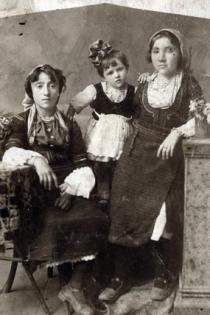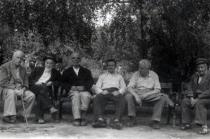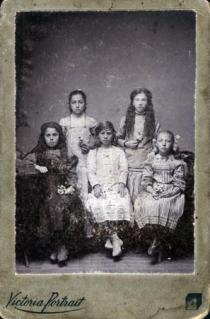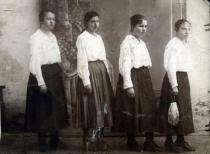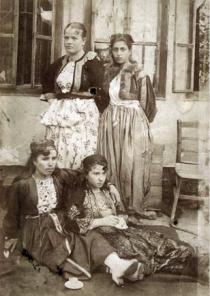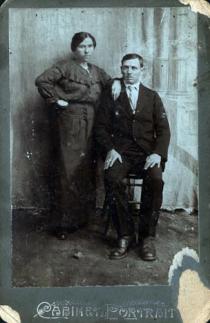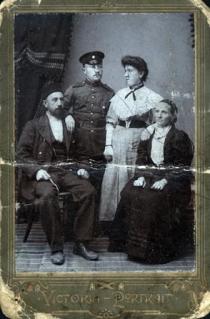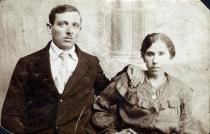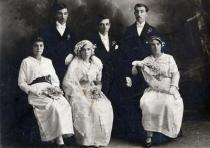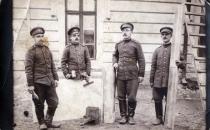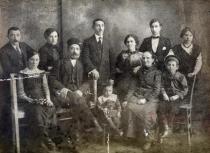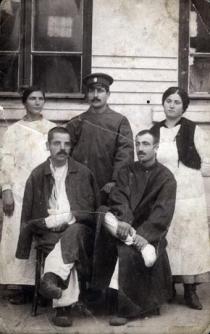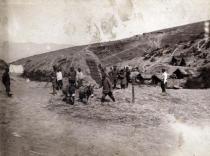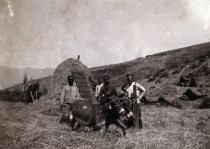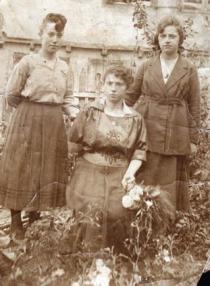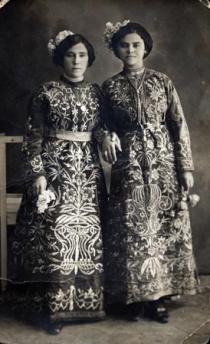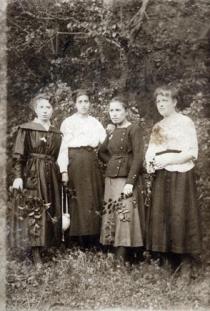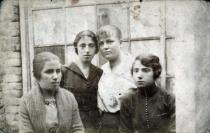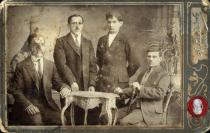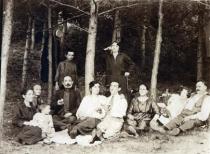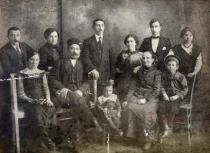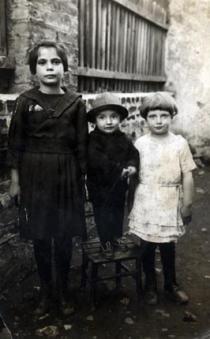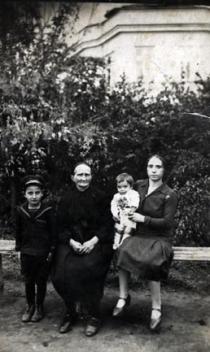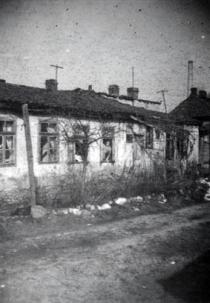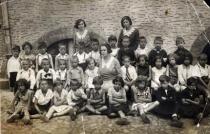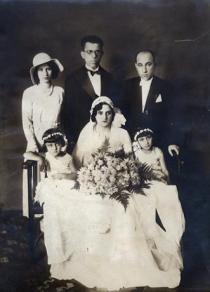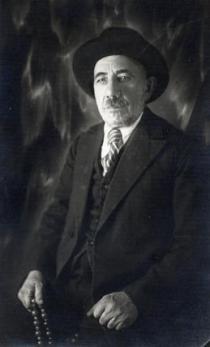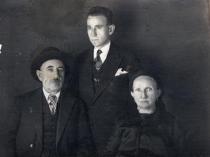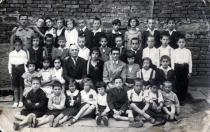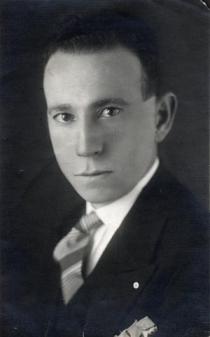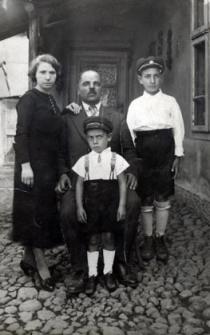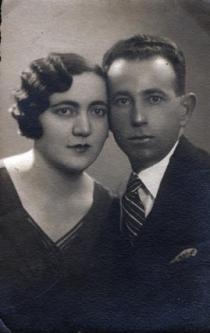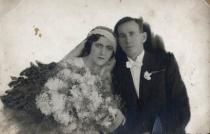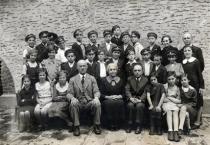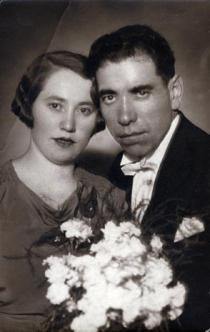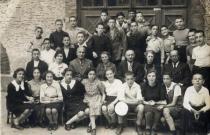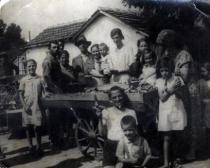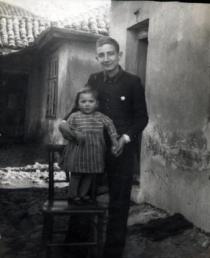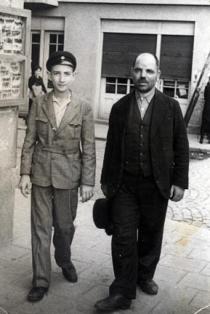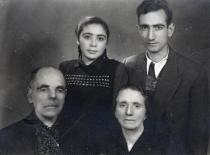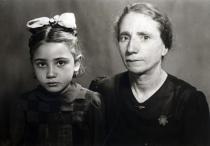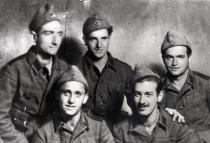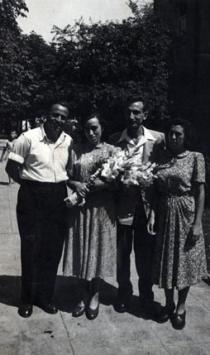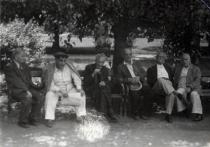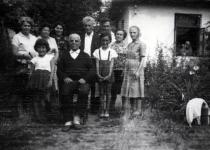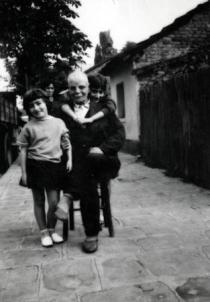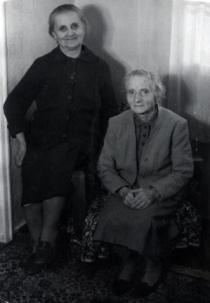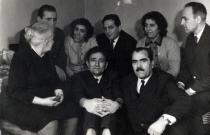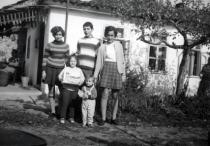This photo was taken when we graduated the fourth primary grade of the Jewish school in the Jewish neighborhood Iuchbunar, or present day fourth grade, in 1935 in Sofia.
Three teachers took part in the commission. On the row below in the middle is Mrs Franka Danon. To her left is the chairman of the exam commission and to her right is the headmaster. Above on the right is Mr Ashraeli, who taught us Ivrit. Next to him is another member of the commission. I am behind Mrs Danon - the sixth on the right on the second row. The fourth from left in the last row is my friend Isak Ninyo.
The Jewish school was between Osogovo Str, Bregalnitsa Str and Pozitano Str. There was a synagogue complex on a part of Pozitano Str. There were two yards. The Jewish school had two buildings - a new one and an old one. The nursery school, first and second primary grade were in the new one and the other classes were in the old one. The new building was opened in my time - approximately around 1930. I was among the first students who entered it. What was typical for the times was that the children living in the center of Sofia near Hristo Botev Blvd studied in the central Jewish school. The other children studied in the Iuchbunar school. The classes consisted of 35 to 37 children. But gradually that changed and children from Iuchbunar went to study in the central school, because the number of children there was declining. Some of my classmates had to move to the central school in the last grades. There were three classes in the nursery school, and there were 35 - 40 children in each one. There were at least three classes in the first grade. The number of students in the classes declined throughout the years and in the last junior high school grade there was only one class of 35 students.
Jewish schools were the so-called 'private schools' and that is why after the third junior high school grade [present-day seventh grade] we had to sit for an exam in front of a commission formed by the Education Ministry. For a couple of months we had to revise and learn well everything we had learned in Ivrit from first to fourth primary grade so that we would be able to talk about it in Bulgarian in front of the commission. We were very well prepared in Bulgarian language and in maths. In our class 19 of the 30 students received excellent marks. I remember that even the newspapers wrote about our success. It was thanks to our teachers and to the fact that there was a natural selection among the students through the years. What was typical about Jewish schools was that in the first grade we were three or four classes and until the last junior high school grade only one remained. There were many reasons for that. Firstly, it was hard to study in the Jewish school because of the language. Secondly, education was all the day. All the other schools studied until one o'clock in the afternoon but we studied in the mornings and in the afternoons. Thridly, many of the people in the Jewish neighborhood were poor and wanted their children to start working from an early age in order to help the family. So, some of them were sent to Bulgarian schools, and others were sent to work.

